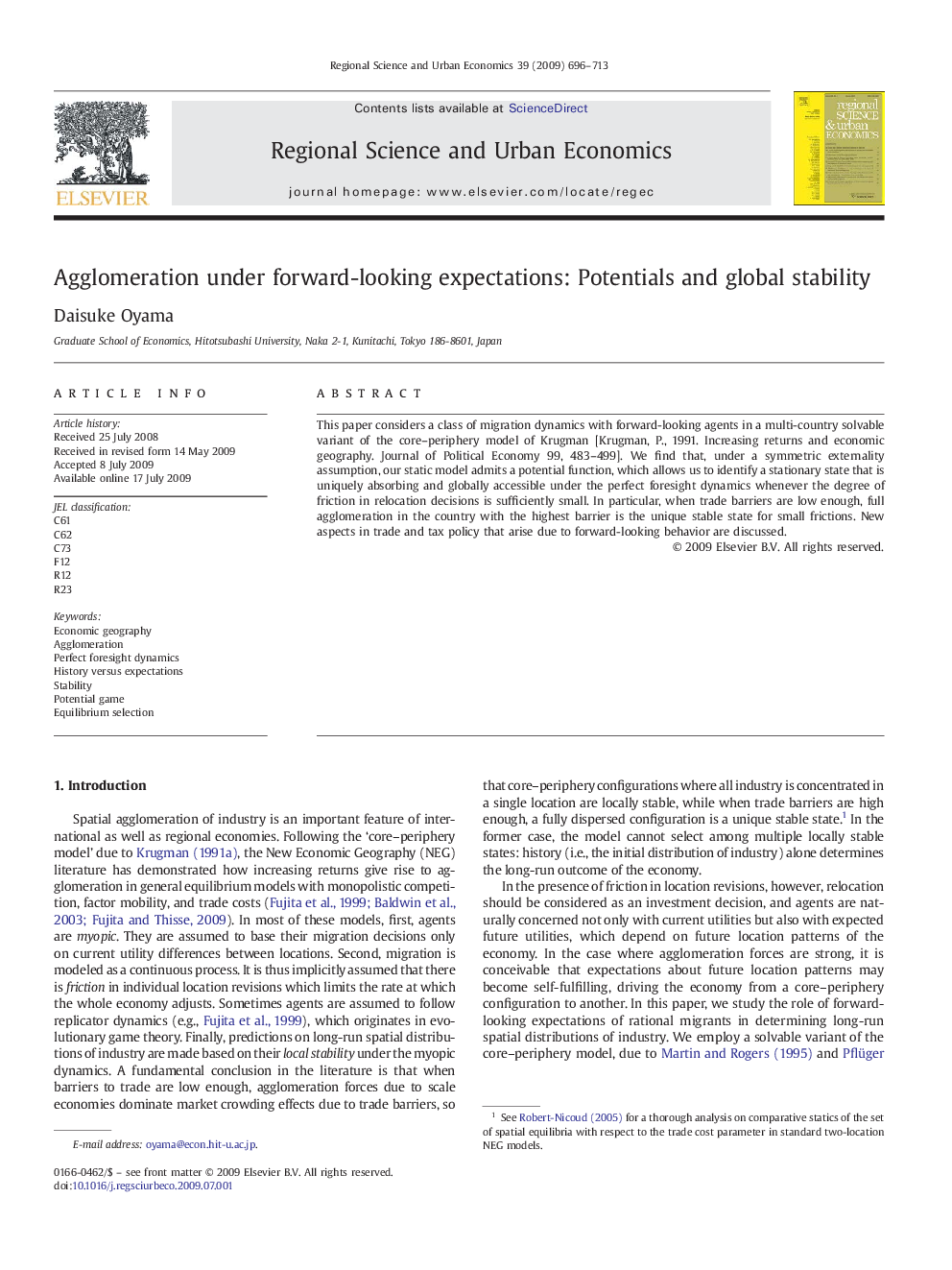| Article ID | Journal | Published Year | Pages | File Type |
|---|---|---|---|---|
| 983860 | Regional Science and Urban Economics | 2009 | 18 Pages |
This paper considers a class of migration dynamics with forward-looking agents in a multi-country solvable variant of the core–periphery model of Krugman [Krugman, P., 1991. Increasing returns and economic geography. Journal of Political Economy 99, 483–499]. We find that, under a symmetric externality assumption, our static model admits a potential function, which allows us to identify a stationary state that is uniquely absorbing and globally accessible under the perfect foresight dynamics whenever the degree of friction in relocation decisions is sufficiently small. In particular, when trade barriers are low enough, full agglomeration in the country with the highest barrier is the unique stable state for small frictions. New aspects in trade and tax policy that arise due to forward-looking behavior are discussed.
